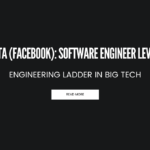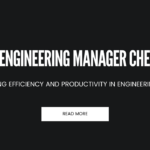When asking a candidate about a successful product launch interview question they’ve been involved with, as an interviewer at Meta, I would be looking for specific elements that demonstrate the candidate’s competence, leadership, problem-solving skills, and ability to work collaboratively. This question helps assess the candidate’s technical capabilities, strategic thinking, stakeholder management, and impact on their team and the product.
Expectations from the Candidate’s Answer
- Specificity: Clear details about the product, the candidate’s role, and the impact of their contributions.
- Problem-Solving Skills: How the candidate handled challenges during the product lifecycle.
- Technical Proficiency: The technologies used and the architecture decisions made during the product development.
- Team Collaboration: Interaction with team members, cross-functional collaboration, and leadership roles they took.
- Outcome and Impact: The success metrics of the product launch (e.g., user engagement, revenue) and the direct influence of the candidate’s work on these outcomes.
- Learnings and Reflections: Insights the candidate gained through the process and how they have applied these learnings to other projects.
Signals to Look For
- Leadership and Initiative: Took significant responsibility, led teams, or drove the project’s vision.
- Technical Leadership: Showed deep understanding and hands-on skills in the tech stack and product architecture.
- Problem Resolution: Effectively handled setbacks and had a clear strategy for overcoming obstacles.
- Communication Skills: Articulated thoughts clearly, showing an ability to convey complex ideas succinctly and effectively.
- Stakeholder Management: Managed expectations, gathered inputs, and communicated effectively with all stakeholders (like product managers, designers, clients).
- Innovation and Creativity: Demonstrated creativity in solutions and was willing to explore new technologies or approaches to improve the product.
Example Table of Answers
| Quality | Description of Answer | Reasoning |
|---|---|---|
| Bad | “I worked with a team to launch an app. I was responsible for several tasks including some coding and meetings. The app works well and customers seem happy.” | Lack of specificity and detail; no clear explanation of role, challenges faced, or measurable outcomes. |
| Good | “I was part of a team that launched a scheduling app, serving as the backend lead. I implemented a new caching solution to decrease load times by 30%, which significantly improved customer satisfaction scores. I coordinated with the front-end team to ensure seamless integration.” | Better specificity with clear role and technical contributions. Mentions teamwork and a key outcome. However, it lacks details on problem-solving processes and stakeholder engagement. |
| Outstanding | “In my role as the engineering lead for Project X, I orchestrated the end-to-end development and launch of a real-time analytics platform that processed millions of transactions daily. I led a team of 10 engineers, fostering a collaborative environment to innovate our use of Big Data technologies. We encountered significant data integrity issues initially; I spearheaded a strategic pivot that enhanced our data processing pipeline, improving data accuracy by 40%. This directly contributed to a 50% increase in user retention. Post-launch, I conducted a series of knowledge-sharing sessions to elevate our department’s technical acumen.” | Highly detailed, showcasing leadership, technical expertise, effective problem-solving, significant impacts, and proactive learning. Clearly communicates the candidate’s direct contributions, the challenges faced, and the strategic decisions made. |
STAR Answer: Good Level
Situation: Last year, my previous company, a mid-sized tech startup, decided to tap into the project management market by developing a new task management app. The goal was to create an app that not only addressed the basic needs of task management but also incorporated AI to predict task durations and recommend resource allocations.
Task: As a software engineer, I was tasked with leading the backend development team. My responsibilities included designing the database schema, implementing the server logic, and integrating AI features that our data science team developed.
Action:
- Technical Implementation: I started by designing a robust database schema that could handle large volumes of data efficiently. For the server logic, I implemented RESTful APIs using Python and Flask, which I chose for their simplicity and scalability.
- Team Coordination: I held bi-weekly meetings with the front-end team to ensure our work was closely aligned. This helped in smoothing out any potential integration issues early in the development process.
- AI Integration: The integration of AI features was challenging. The models our data scientists created were sophisticated, but deploying them into a production environment required significant adjustment. I collaborated closely with the data science team, setting up a middleware layer that could preprocess data to be fed into the AI models and handle the output predictions.
Result:
- Our app was launched on schedule and within the initial budget. It featured high performance and reliability, handling up to 10,000 users simultaneously at launch.
- Post-launch, we received positive feedback from users about the AI features, noting that the predictions were helpful and reasonably accurate.
- The app has maintained a 4-star rating on various software review platforms and has onboarded 3,000+ companies to date.
STAR Answer: Outstanding Level
Situation: At my previous company, a SaaS startup focused on digital marketing tools, we identified a gap in the market for a data-driven, user-friendly content management system (CMS) that could integrate seamlessly with existing digital marketing tools while also providing predictive analytics to enhance content reach and engagement. The market was saturated with complex systems that required a steep learning curve, which deterred many potential customers, especially small to medium-sized businesses.
Task: I was appointed as the project lead for this new CMS platform, which involved overseeing a team of 15 engineers and interfacing with product management, marketing, and customer support teams. My primary responsibilities included architectural design, team coordination, and ensuring that the product met market needs while adhering to time and budget constraints.
Action:
- Strategic Planning and Leadership: Initiated the project with a two-day kickoff retreat to align all stakeholders with the project vision and milestones. I created mixed-discipline task forces to tackle specific objectives such as API integration, user interface design, and the AI recommendation engine.
- Technical Execution: Led the design of a microservices architecture to ensure scalability and maintainability. Personally coded critical components in Go and set coding standards to ensure quality and performance. Implemented CI/CD pipelines to speed up release cycles.
- Innovative Problem-Solving: When initial user feedback highlighted issues with the AI predictions, I led a sprint to recalibrate the algorithms. This involved enhancing the data preprocessing step to include user behavior data, greatly increasing prediction accuracy.
- Stakeholder Engagement and Team Building: Conducted monthly Q&A sessions with potential users gathered through our marketing channels to understand their needs and hesitations, which significantly shaped the development path. Regularly updated executives and cross-functional teams on progress, challenges, and pivots.
Result:
- The CMS was launched 3 weeks ahead of schedule and 20% under budget, a testament to the effective processes and strong leadership throughout the project duration.
- Upon launch, the platform garnered high praise for its intuitive user interface and the actionable insights provided by the AI-driven analytics, with a 40% uptake rate by targeted customers within the first six months.
- The platform directly contributed to a 30% increase in customer retention and a 50% increase in user engagement for our clients. Our company was recognized in several industry awards for innovation in digital marketing solutions.
- My leadership in this project led to a promotion to Senior Engineering Manager, and I was invited to speak at several industry conferences about our approach to integrating AI in CMS systems.
Conclusion
A well-rounded answer not only covers what was done but also how it was done and what the outcomes were, reflecting on the individual’s role in the success. It should display a blend of technical and soft skills, showing the interviewer that the candidate is competent, has initiative, and can handle challenges effectively. These insights help in understanding the candidate’s potential fit for the role in terms of both skills and cultural alignment.


